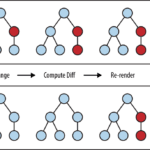What Are Copper Chips?
Copper chips are small, irregular fragments of copper produced during machining, drilling, milling, or other manufacturing processes. These chips result from shaping and cutting copper materials into desired forms.
Key Characteristics of Copper Chips
- Material Composition: Made primarily of copper with trace elements depending on the source material.
- Physical Properties: Durable, malleable, and conductive, making them valuable for recycling and reuse.
- Size and Shape: Varies depending on the machining process and equipment used.
How Copper Chips Are Produced
Processes Generating Copper Chips
- Milling and Drilling: Common in manufacturing industries where copper components are crafted.
- Turning and Cutting: Generates chips as copper rods or sheets are shaped.
- Grinding and Shaping: Produces fine copper particles for intricate designs.
Factors Influencing Chip Formation
- Tool Material and Sharpness: Affects chip size and smoothness.
- Machining Speed: Determines the heat and quality of chips.
- Type of Copper Alloy: Influences the ease of chip formation and recycling potential.
Applications
It have diverse uses across industries, contributing to both economic and environmental sustainability.
Industrial Applications
- Recycling: Melted down to produce new copper materials.
- Conductive Components: Used in manufacturing wires and electrical parts.
- Additives in Metallurgy: Blended with other metals for alloy production.
Creative and DIY Uses
- Art and Jewelry Making: Crafted into decorative pieces due to their luster.
- Home Décor Projects: Used in mosaics or metallic accents.
Benefits of Recycling
Recycling it offers significant economic and ecological advantages.
Economic Benefits
- Cost Efficiency: Reusing chips reduces the demand for raw copper.
- Market Value: Recycled copper fetches a high price in global markets.
Environmental Advantages
- Reduced Mining Impact: Minimizes the need for copper ore extraction.
- Energy Conservation: Requires less energy compared to producing virgin copper.
- Waste Reduction: Diverts substantial material from landfills.
Challenges in Copper Chip Recycling
While recycling copper chips is beneficial, certain challenges must be addressed.
Impurities and Contamination
- Chips may contain oils, coolants, or other contaminants from machining processes.
Sorting and Cleaning
- Effective cleaning processes are essential to ensure high-quality recycled copper.
Processing Costs
- Advanced recycling techniques can be expensive, requiring specialized equipment.
Efficient Management of Copper Chips
Proper handling and recycling of copper chips can maximize their value and minimize waste.
Steps for Managing
- Segregation: Separate from other waste materials.
- Cleaning: Remove oils or other contaminants using solvents or mechanical methods.
- Storage: Use designated bins or containers to prevent oxidation.
- Transport: Partner with reliable recycling companies for efficient processing.
Tips for Industries
- Implement chip collectors near machining tools to minimize manual handling.
- Educate workers on sustainable practices and recycling protocols.
- Regularly audit recycling processes to ensure compliance and efficiency.
Also read: Difference Between .NET Core and .NET Framework
Modern Industries
Electronics and Electrical Applications
- Chips are recycled into components like connectors, cables, and PCBs.
Construction Sector
- Reused in roofing materials and plumbing fixtures due to copper’s durability.
Automotive Industry
- Contributes to the production of parts requiring high conductivity.
Fun Facts
- Copper can be melted and reformed up to 100% without losing quality.
- The recycling of these materials contributes significantly to reducing greenhouse gas emissions.
- In some cultures, they are considered lucky and used in artisanal crafts.
Conclusion
It may appear as a mere byproduct of machining processes, but their importance extends far beyond. From industrial applications to creative reuse, these fragments of copper hold immense potential when managed effectively. By understanding their properties, recycling methods, and applications, industries and individuals can unlock their value while contributing to a more sustainable future.



